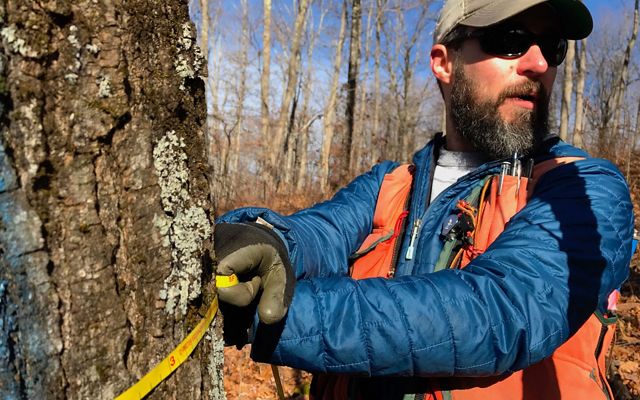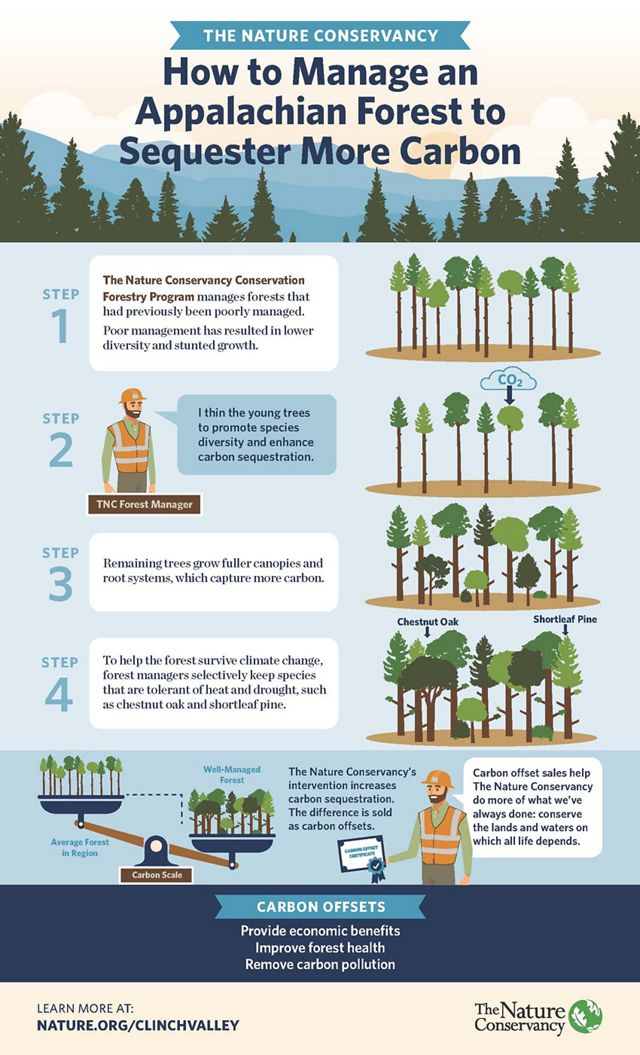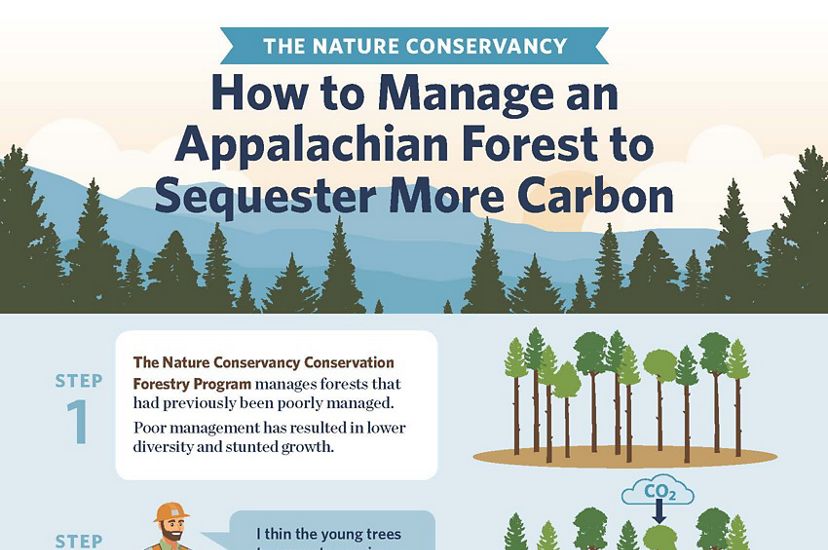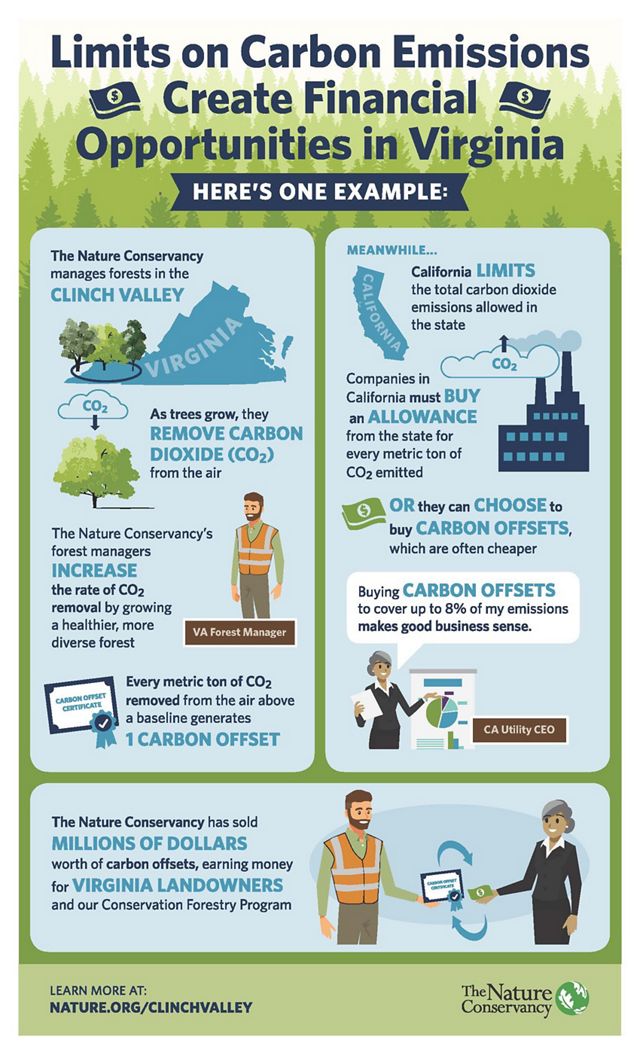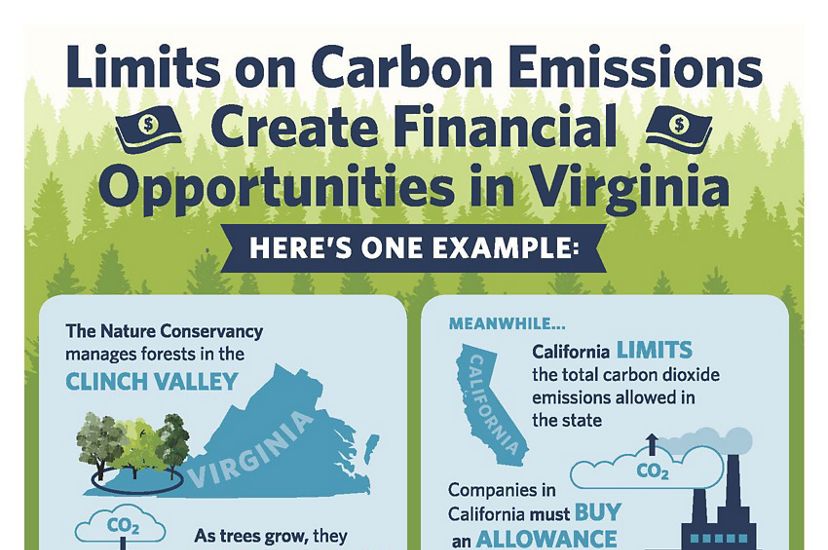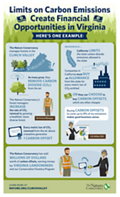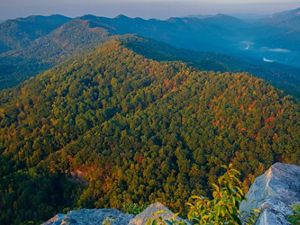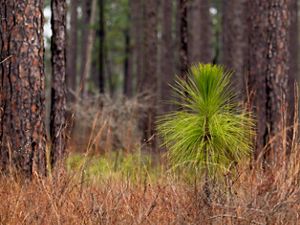Clinch Valley Conservation Forestry
An innovative effort to protect and restore Appalachian forests for people and nature.
With careful and far-sighted management, we have an incredible opportunity to enrich both the economic productivity and ecological health of our forests far into the future.
We created the Clinch Valley Conservation Forestry Program to demonstrate better forest management in the Appalachians. The program emphasizes long-term stewardship, making our forests healthier, more diverse and more valuable places in the future. Our improved management of the Clinch Valley’s forests is also creating new opportunities for TNC to collaborate with partners.
Working Forests
Our on-the-ground operations are designed to enhance a wide range of forest resources, including soil and water quality, high-value timber, carbon storage, and sensitive wildlife habitat. All management, including our timber harvesting, is guided by principles set forth in an Operations Plan prepared in consultation with many forestry and wildlife professionals.
Our Conservation Forestry Program involves a unique arrangement with private landowners in southwestern Virginia. While retaining ownership of their properties, they transfer timber and ecosystem service rights to TNC through permanent forest management easements. In return, forest owners receive annual payments based on the value of their timber.
TNC makes all forest management and harvest decisions, and the generated revenues help sustain the program. The partnership ensures that the properties remain as working forests rather than succumbing to development or other land-use changes.
The program launched in 2002 when America’s oldest cattle ranch, Stuart Land & Cattle Company, committed 5,750 acres. Today, our Conservation Forestry Program manages 22,052 acres across the Clinch Valley.
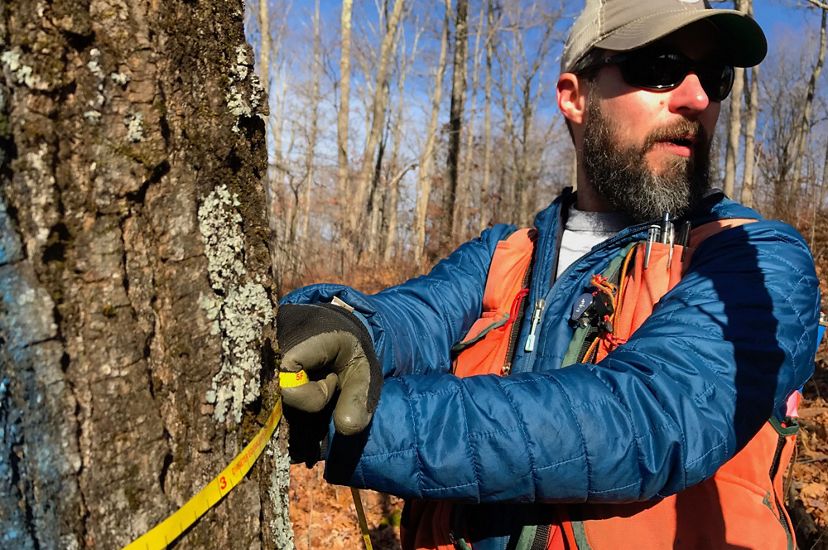
Forest Carbon Offsets
Forests help fight climate change by storing carbon in the roots, trunk, branches, and leaves of trees. Since healthy forests absorb more atmospheric carbon than degraded ones, protecting and restoring healthy forests is a key strategy in solving the challenges presented by climate change.
TNC has undertaken an effort to credibly quantify the additional carbon stored through improved forest management in the Conservation Forestry Program. Employing methods of measurement and monitoring from the highly respected Climate Action Reserve (CAR) forest carbon standard, metric tons of carbon dioxide have been successfully verified through 2014 by an accredited third-party auditor, with more expected over time.
This was a landmark achievement, as it represents the first forest carbon project in Virginia to be verified and registered to rigorous CAR standards.
All management, including our timber harvesting, is guided by principles set forth in an Operations Plan prepared in consultation with many forestry and wildlife professionals, as well as third party verified by the Forest Stewardship Council® FSC®-C008922.
TNC's Conservation Forestry Program is one example of how creative problem solving has provided much needed conservation funding through carbon markets.
The Benefits of Carbon Markets
Creative problem solving is rewarded through carbon markets. When companies must pay for their carbon dioxide pollution, they have a financial incentive to reduce the amount they pollute. This creates business opportunities for sectors that improve energy efficiency, fuel efficiency, renewable energy options, and more.
Carbon offsets, a component of carbon markets, are credits given to projects that remove carbon dioxide or other greenhouse gases from the atmosphere. These projects require money to develop and maintain. Businesses fund these projects through purchasing carbon offsets, and in return, receive credit for the carbon that project removed from the atmosphere.
In 2014 our Conservation Forestry Program became the first Conservancy project in the nation to earn and sell certified forest-carbon credits under California’s cap-and-trade program. In 2018, we successfully verified 158,905 tons of carbon captured, offsetting emissions from almost 18 million gallons of gasoline.
With California’s legislature extending the program through 2030, market stability will generate increased revenues, which will enable more on-the-ground forest restoration—a big win for climate, habitat and water quality.
Carbon offsets have made our Conservation Forestry Program economically viable and environmentally sustainable. This is just one example of the potential of carbon markets to create new financial opportunities.
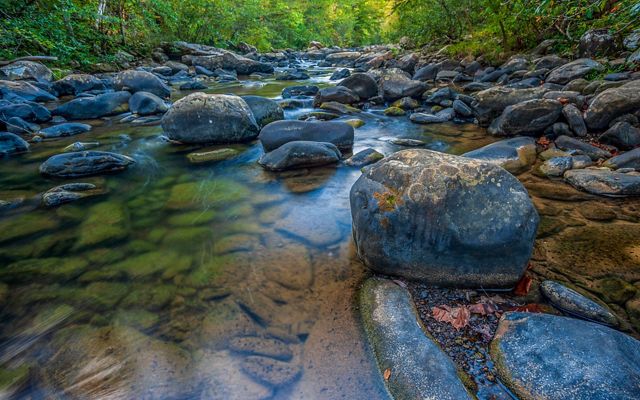
A Deal for the Centuries
In July 2019, TNC announced the acquisition of 253,000 acres in the Central Appalachians. The Cumberland Forest Project is TNC’s largest-ever conservation effort in the eastern United States, protecting sweeping forest landscapes across two parcels, one in Southwest Virginia and one along the Kentucky and Tennessee border.
The project has its roots in the Clinch Valley, building on the program's successes and lessons learned in community based conservation, sustainable forestry, and carbon markets.
Safeguarding this vast stretch of forest tackles climate change on two fronts: by storing millions of tons of carbon dioxide and by connecting a migratory corridor that scientists believe could be one of North America’s most important “escape routes” as plant and animal species shift their ranges to cooler climates.
In August, 2019 TNC took another historic step with the announcement of the largest open space easement ever recorded in the Commonwealth. The partnership between TNC, the Virginia Department of Forestry (VDOF), and the Virginia Department of Environmental Quality (DEQ) permanently protects 22,856 acres of forest land in Russell County in southwest Virginia.
The Clinch Highlands working forestry easement is unique not only for its size, but more importantly because of the many ways it supports the resiliency of the surrounding communities.
The 22,856 acres now protected in perpetuity through the easement were identified early on as a critical piece of the Cumberland Forest Project’s footprint. This particular section of the property’s vast forests also provides water-quality benefits to the Clinch River, one of the most biodiverse river systems in North America.
This easement and partnership with the Commonwealth of Virginia marks the first example of how The Nature Conservancy aims to work with partners to protect critical pieces of the Cumberland Forest property for the long term.
Download Resources
We Can’t Save Nature Without You
Sign up to receive monthly conservation news and updates from Virginia. Get a preview of Virginia's Nature News email


